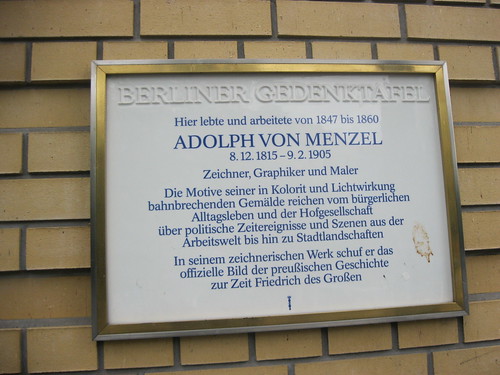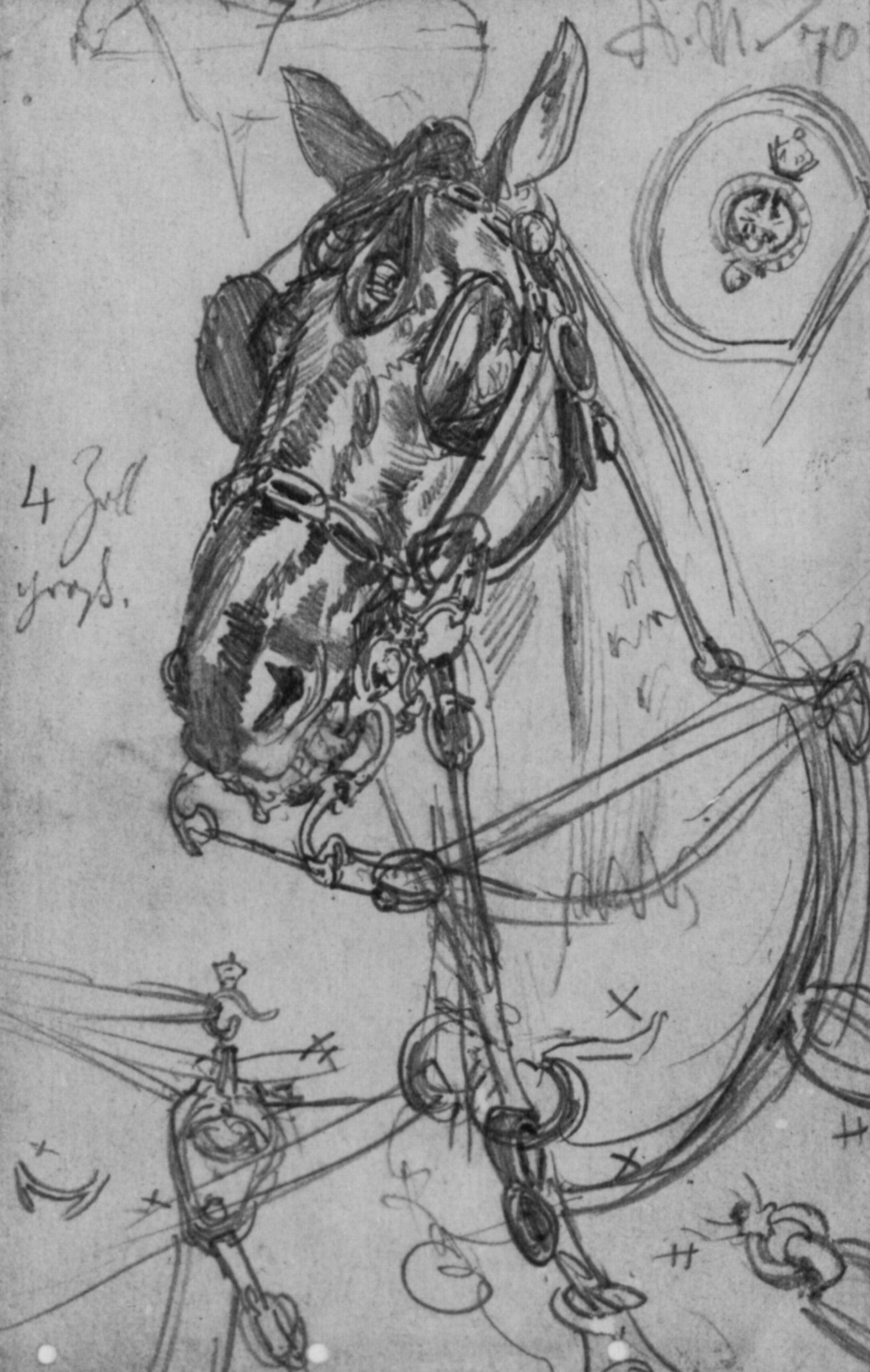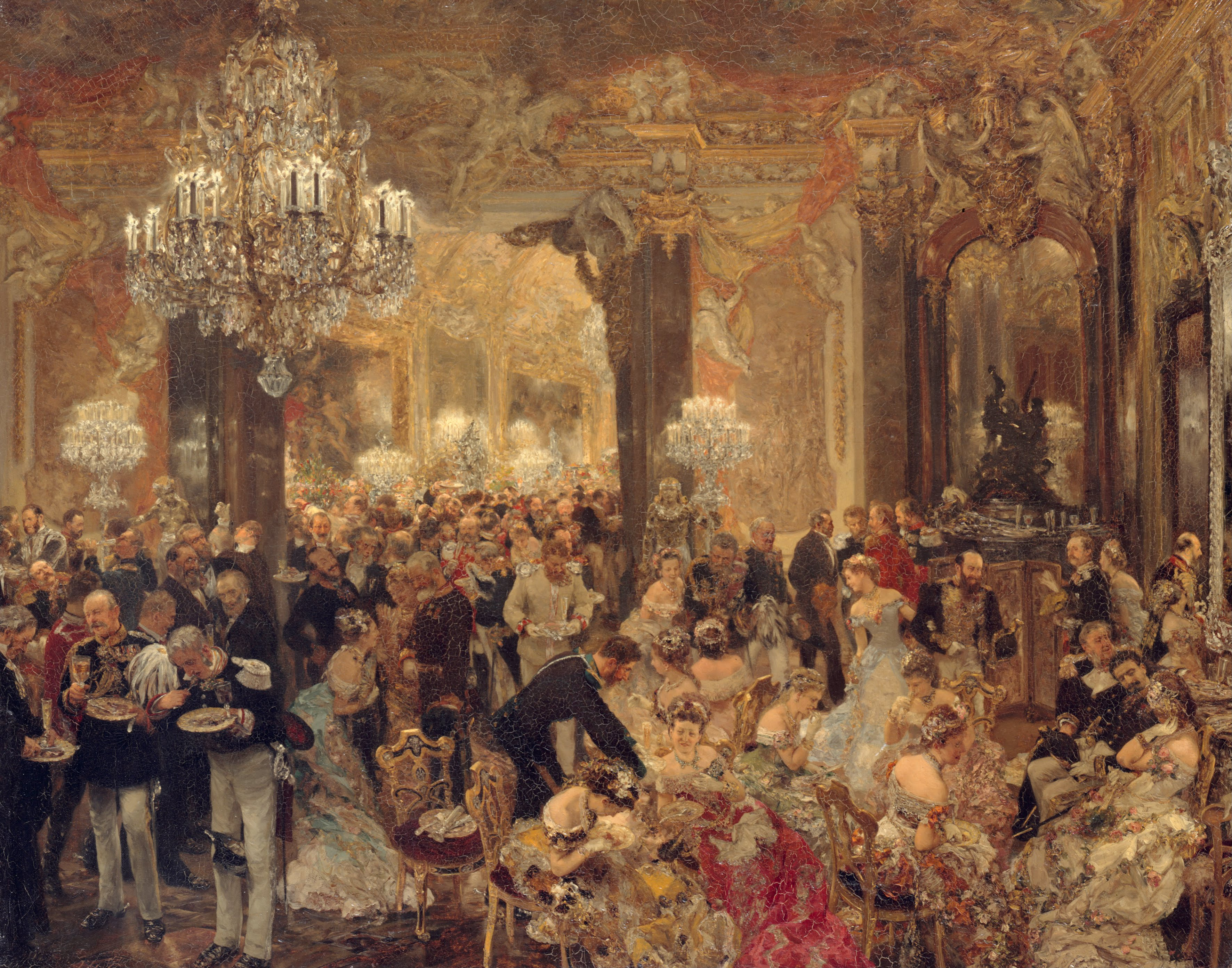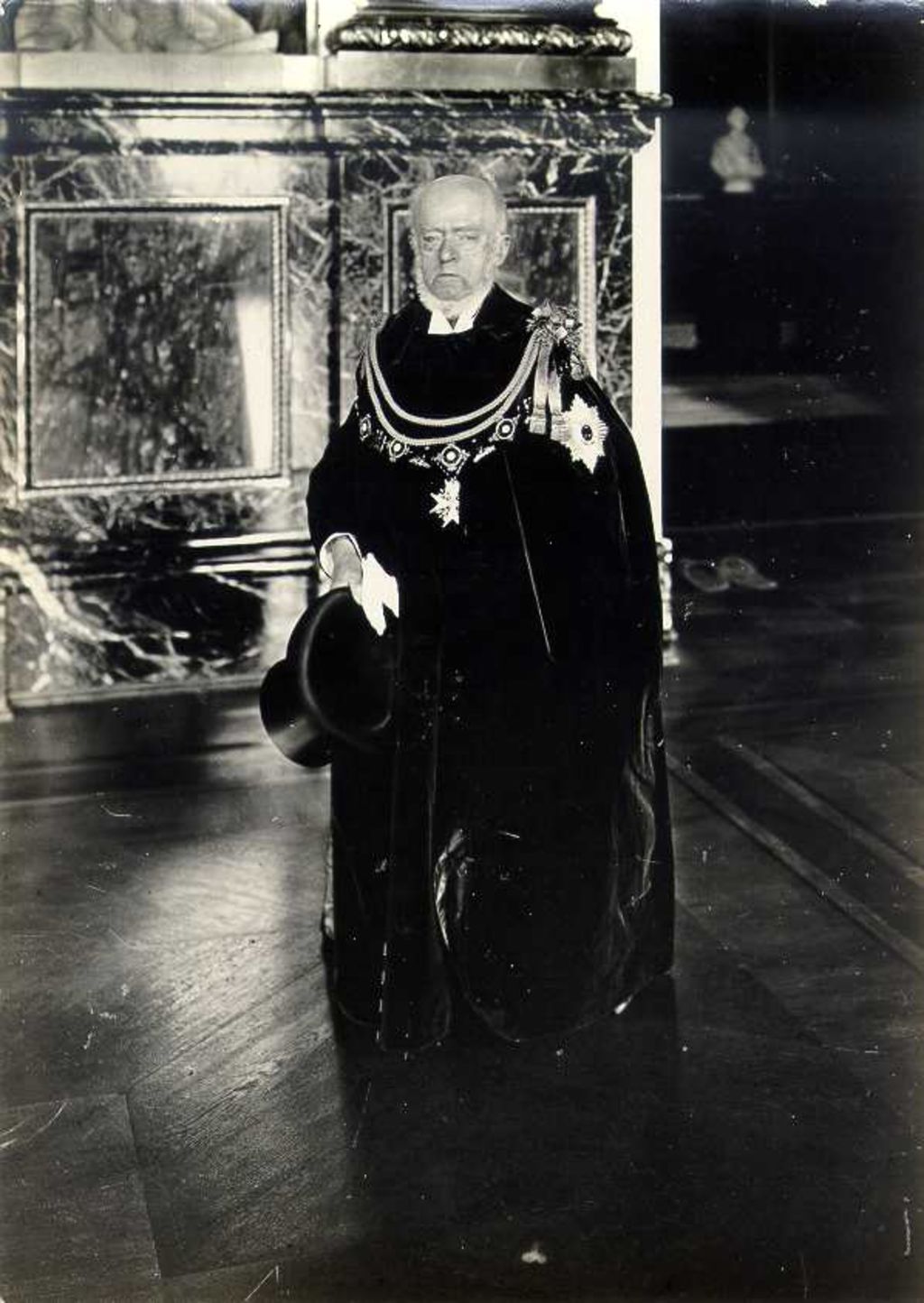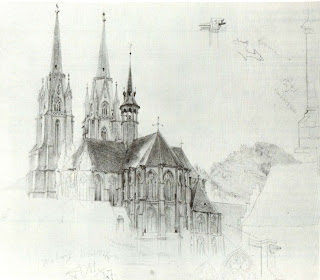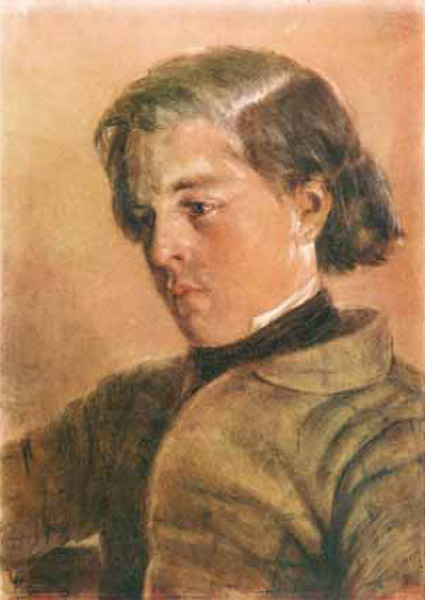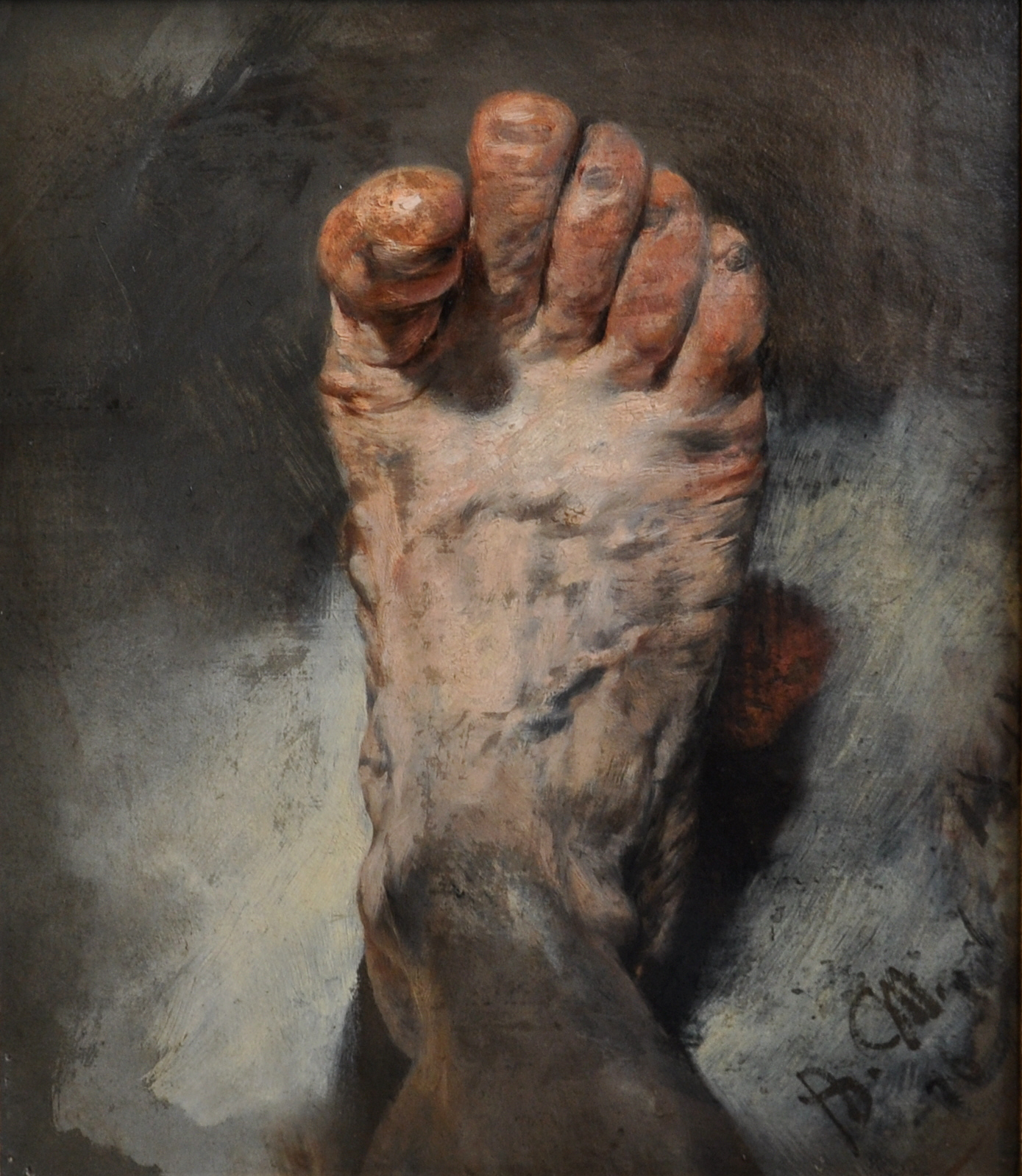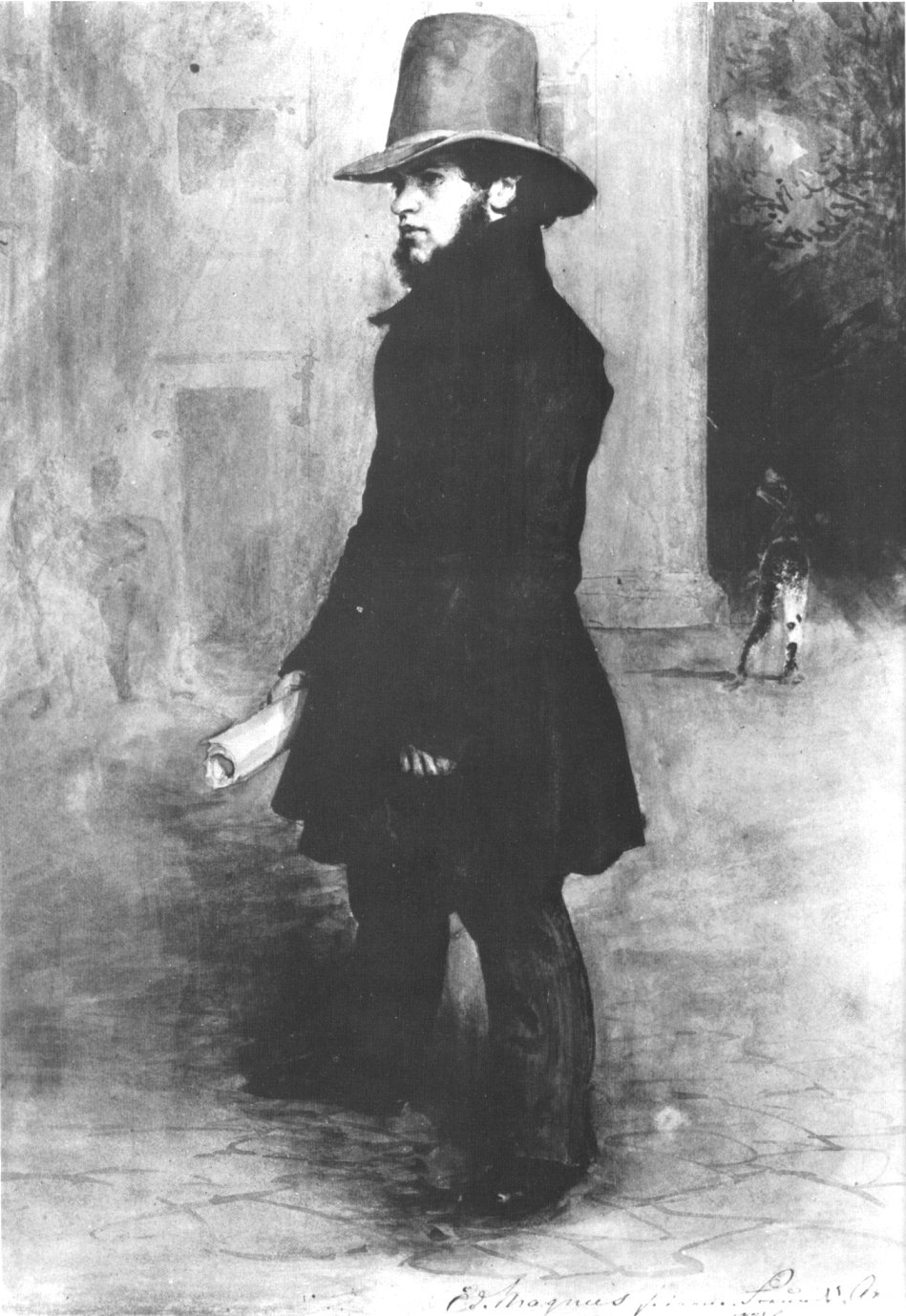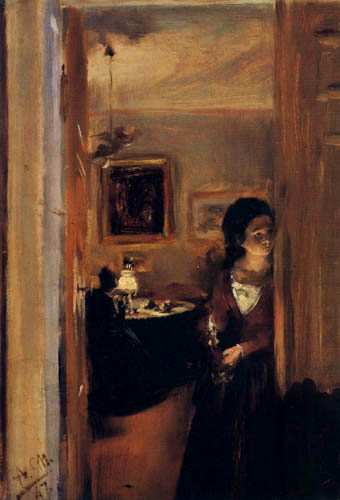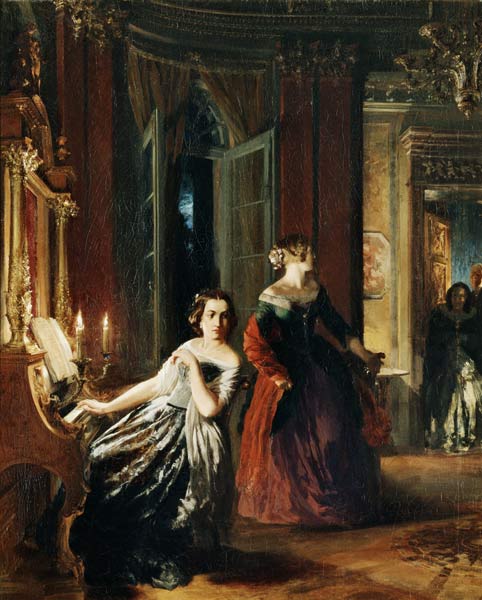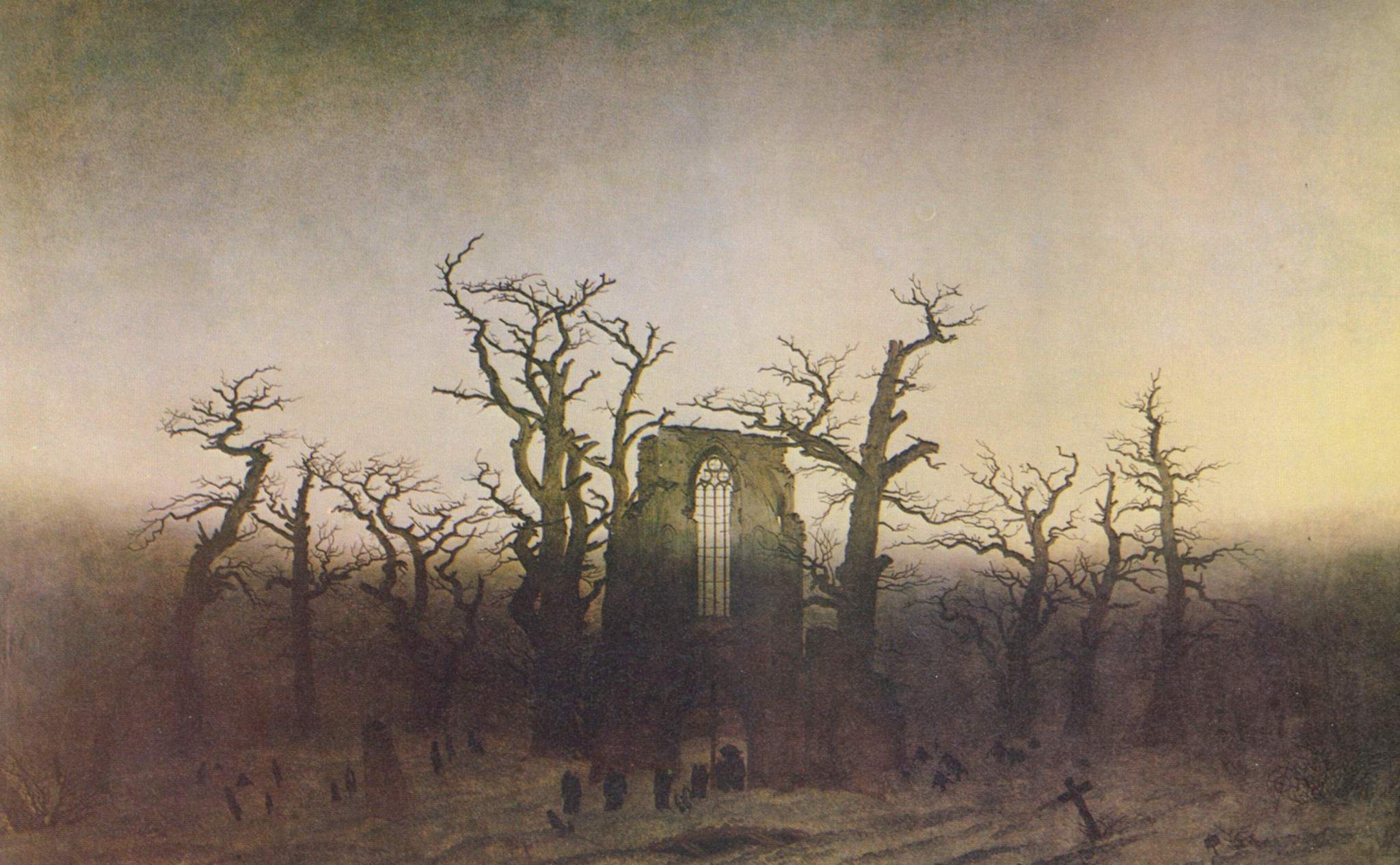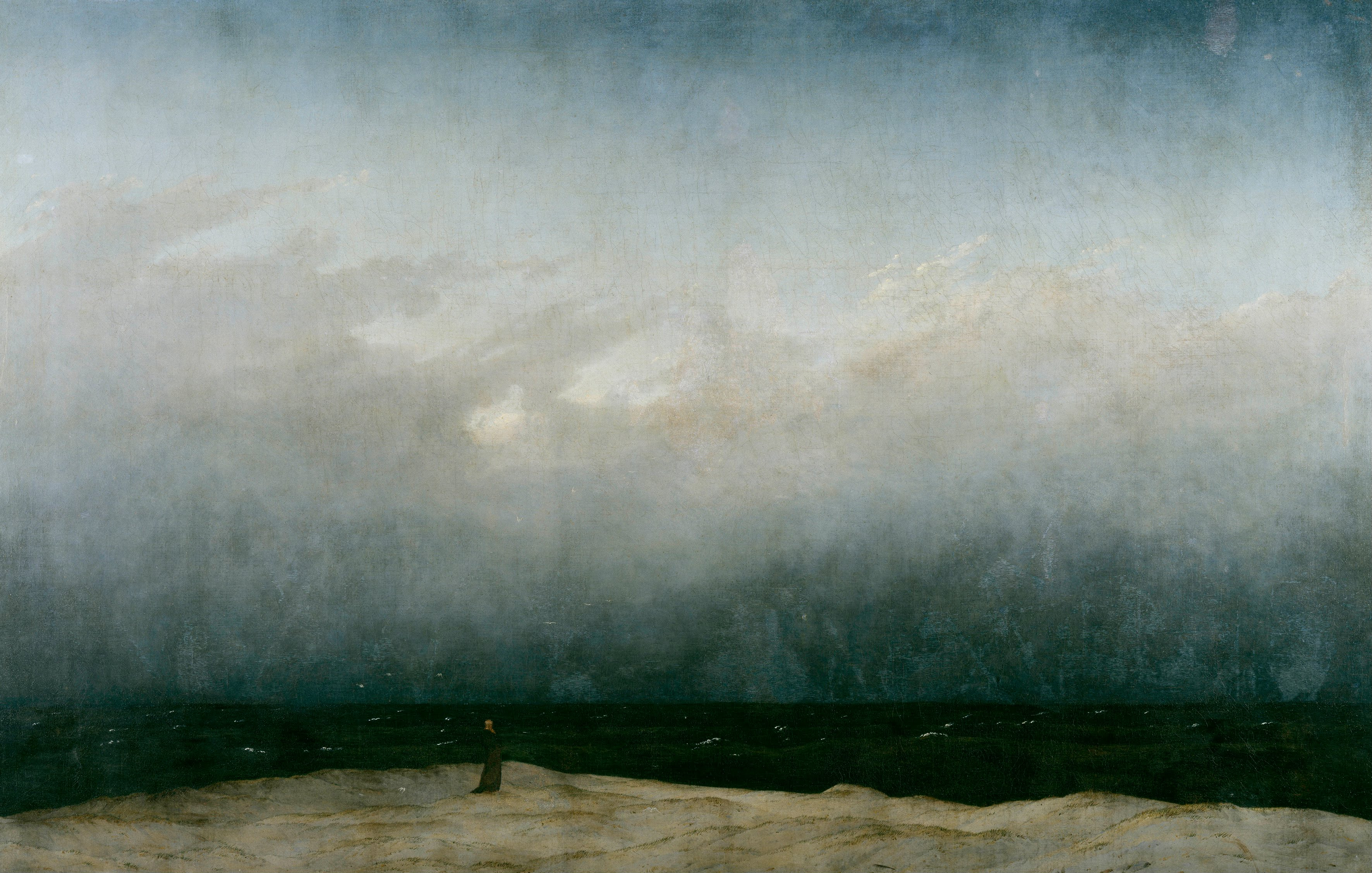Max Liebermann and Adolph Menzel shared a complex and long acquaintanceship, which was characterized by a deep mutual appreciation of the other ones craftmanship and challenged by different notions on developments within the perceptions on art.
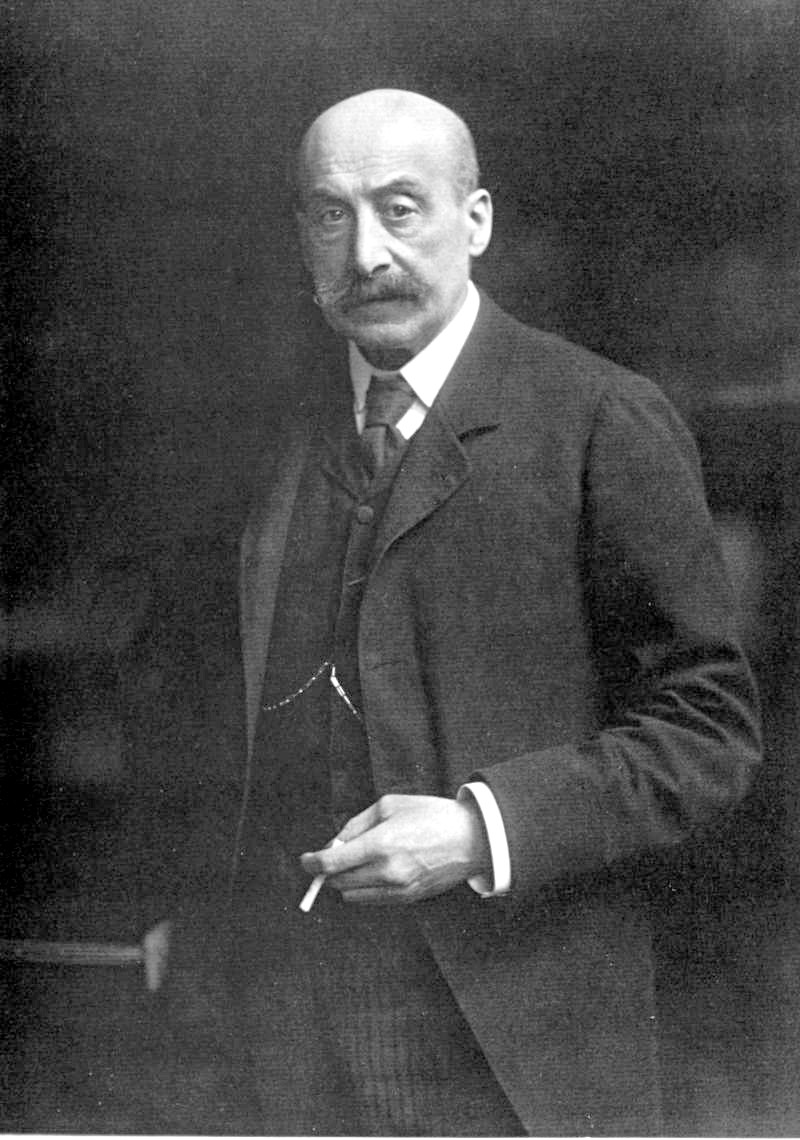 |
| Max Liebermann, source: Wikipedia |
Liebermann, as the later head of the Berlin secession and one of the most influential German impressionists, describes Menzel's painting process and the importance of his drawings in one of his essays on Menzel. Here are some exerpts:
(...)
In the year 1872 Menzel had seen my
painting „Die Gänserupferinnen“ (the geesepluckers) at the art
merchant Lepke and he let me be summoned, if I, who studied at that
time at the school for fine arts in Weimar would come to Berlin had
to visit him. Without his request I would have never dared to do so
since visiting him in his studio was seen as a daredevilry, equal to
entering a lion's cage.
He welcomed me with the words: „Your
Talent might be given to you by God, I admire only the artist's
diligence!“ which I thought was ment as a fatherly admonishment of
the master towards the apprentice. (…)
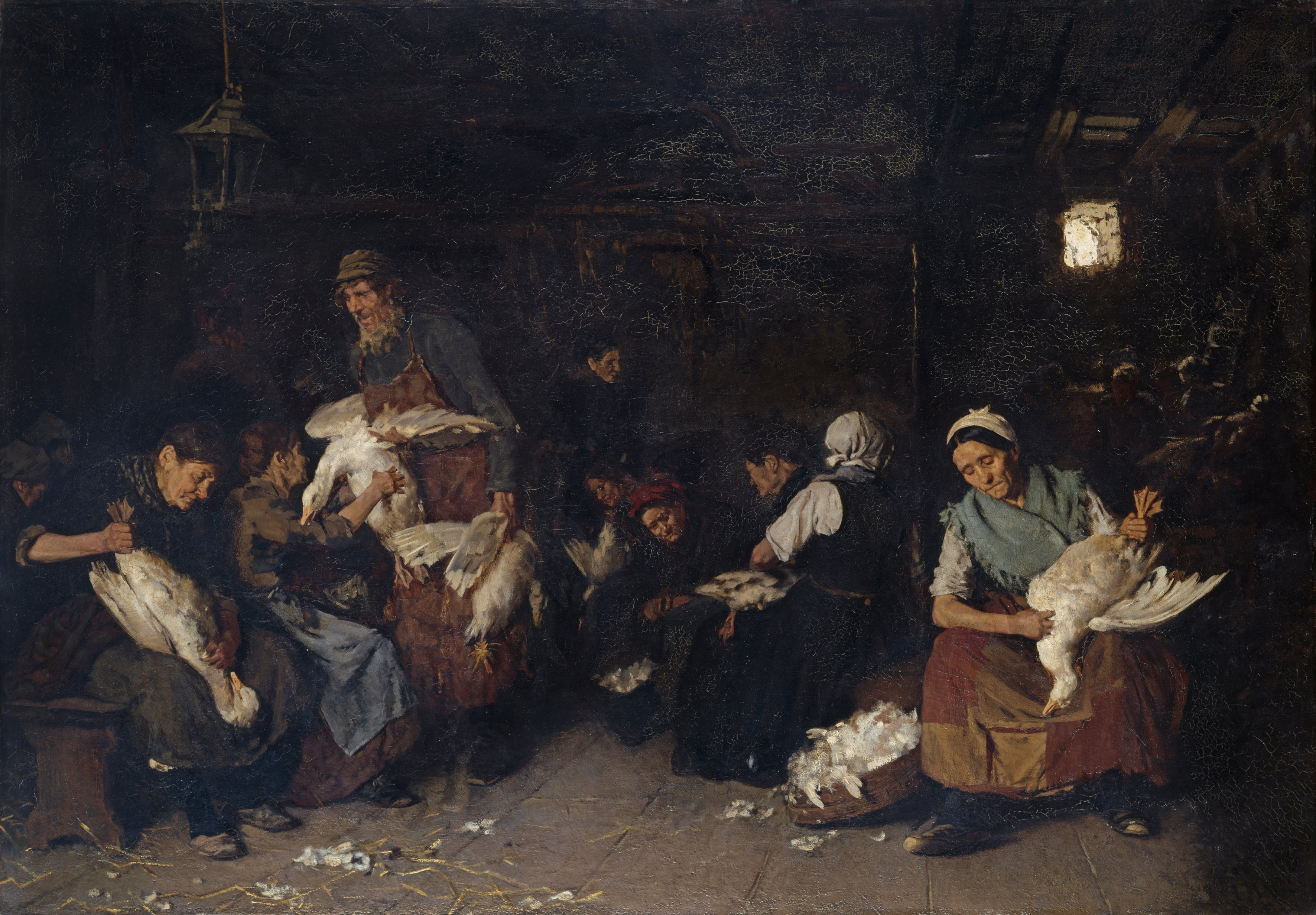 | ||
| Max Liebermann, "Die Gänserupferinnen", 1872, source: Google Arts Project |
The peculiar thing about Menzel was,
that the diligence of the genius didn't count for him, but the
eagerness of the clockmaker, the mechanical work. He wanted to owe
everything to himself alone: the work of art shouldn't step into
being under his hand, it should literally be made with his hands.
I believe that no other artist's
procédé was so headstrong as Menzel's. I witnessed as well the
beginnings of the Iron Rolling Mill as of the Piazza d'Erbe: one
horizontal line on the blank canvas indicated the horizon, then one
could see vertical lines, drawn with blue or red chalk, which showed
the sizes of the several figures in their very spot, and while for
example in the rolling mill the wheelwork in the background, on the
Piazza d'Erbe the row of houses and the air were completed and have
never been touched again, the space that was ment for the figures in
the foreground was painstakingly left open.
The painting was completed as soon as
the canvas was covered all over with paint.
 |
| Adolph von Menzel, "Das Eisenwalzwerk", 1875, source: Google Arts Project |
This astoundingly selfconfident way of
painting, that he put himself through, becomes even more stunning, if
one knows that since his unfinished painting of Frederic II's speech
to his generals in Leuthen he never used any Cartoon, sketch or any
other preliminary work for his painting than his single drawings. He
didn't paint into a painting after nature but only with help of his
drawn studies, that he stuck to slavishly. I witnessed how he
scratched down the two to three centimeter tall portrait of an old
woman down to the canvas for six times on the Piazza d'Erbe and
repainted it one time after the other, since it didn't show enough
„likeness“ with the portrait on his drawing. (…)
 |
| Adolph von Menzel, study for the iron rolling mill, carpenter's pencil on paper |
Menzel's eminently correct instinct for
the craftmanship within fine art led him to paint alla prima,
opposite to the leading perception; this way of painting, which has
been and will be used by all real masterpainters, old and new, and
which has the advantage, next to the fact that it is the optimal
technique for the usage of oils, consists in the fact that it comes
closest to the realisation of the artist's vision by lending the
sudden impulse, the immediate sensation the most adequate expression.
 |
| Adolph Menzel, "Piazza d'Erbe in Verona", 1884, source: Google Arts Project |
But especially this biggest advantage
of painting alla prima was lost again under Menzel's hand because
instead of painting freely from memory – his memory was so strong
that he could, if he forgot somebody's name during a conversation,
draw the very person, to find out about who it was -
or to paint again directly from nature
into the painting he strictly stuck to his drawn studies: the
paintings are thus „only“ a translation of his drawings into
oils, and because of that much weaker than those. Even if he was able
with his gigantic skills and knowledge was able to transfer his
drawings onto the canvas, he couldn't give what characterizes their
beauty and why no copy can reach the quality of the original: the
inspiration, which led his hand while drawing.
Where Menzel paints alla prima from
nature or from memory – which is basically the same – he creates
virtually something immortal.
 |
| Adolph von Menzel, study for "Piazza d'Erbe in Verona", carpenters pencil on paper |
As proof: the countles pastells,
gouaches, the Balcony room and the other interiors from his
appartment in Ritterstrasse, the „Laying out of the fallen of the
revolution of march“, the Gardens of prince Albrecht (…). All of
those works, which originated casually, as recovery from the efforts
from working on the big paintings and which have been appreciated by
Menzel himself little if at all, are unsurpassable masterpieces. (…) They are timeless.
 |
| Adolph von Menzel's bedroom in his studio in Ritterstrasse |
(...)
I skip here the many probably known
anecdotes, that are circulating about his „franckness“, if it is
not to be called crudeness, and I only want to mention one incident
that might only be known to me, to demonstrate that he even remained
his independence face to face with someone like Bismarck.
Menzel had entrusted me with 16 or 18
of his pieces, since I was appointed by the french government as
juror of the admssionary panel for the world exhibition in Paris in
1889, when all of sudden a decree by Bismarck was published which
prohibited all artists who were prussian officials to participate.
And all of those former celebrities like Achenbach, Reinhold Begas,
down to the uprising newer stars, hurried to take back their works.
Except Menzel; even as a ministerial director showed up to explain to
him that for him as the chancelor of the order pour le merité, it
wouldn't be appropriate to participate in an exhibition in Paris that
celebrates the centenary of the french revolution. Menzel replied: I
am now 73 years old, I always knew what was respectable for me and I
will also know it in future times.
Spoke like that and exhibited without a
worry.
Dostojewski writes in one of his
novels: There is no sadder time, then when we don't know whom to
adore. Let's be glad, in theses sad times to have a man in Menzel,
who we can adore as an artist as well as a human being.
The whole essay of Liebermann in german language can be read in
Adolph von Menzel, "Das graphische Werk"
More prestudies for Menzel's paintings are also included in
Drawings and Paintings by Adolph Menzel on which I had the honour to work as coeditor together with James Gurney.
Wikipedia article on Max Liebermann
and on Adolph von Menzel

